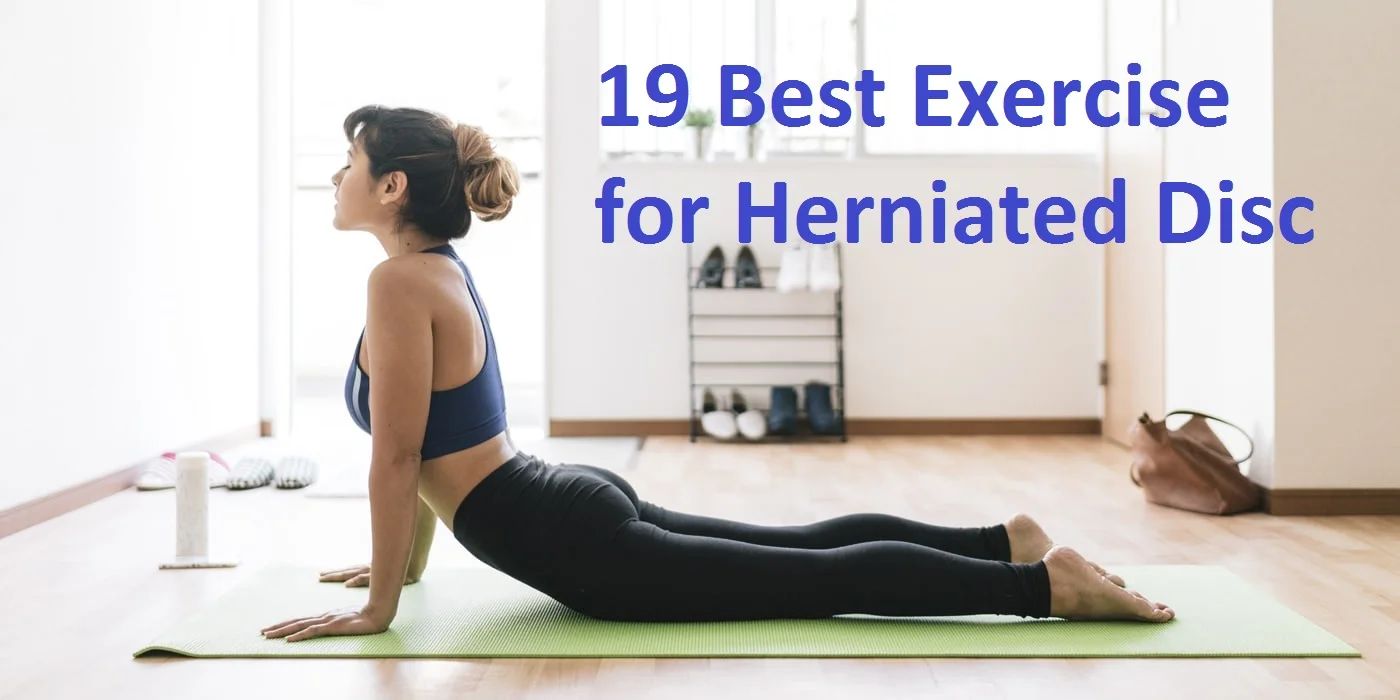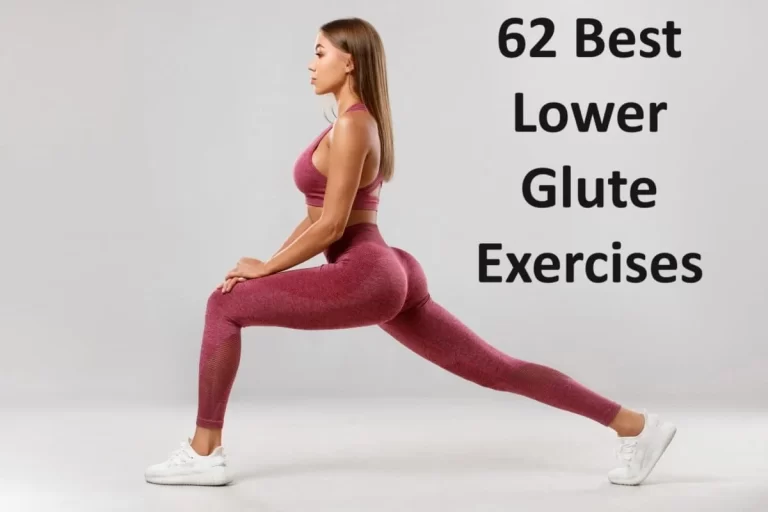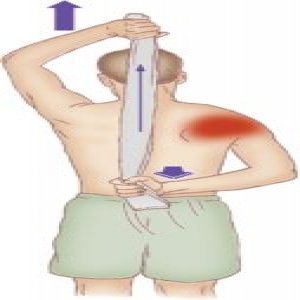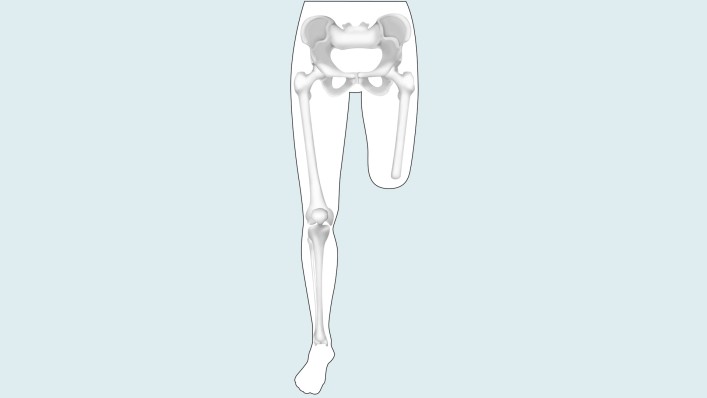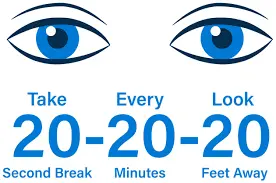19 Best Exercise for Herniated Disc
Herniated discs are a common spinal condition that occurs when the soft inner portion of a spinal disc protrudes through the outer layer, causing pressure on nearby nerves and resulting in pain and discomfort. Exercise is often recommended as a part of conservative treatment for herniated discs, aiming to strengthen the supporting muscles, improve flexibility, and alleviate symptoms.
Gentle exercises, stretches, and movements can all assist reduce the pain of a herniated disk. Activity can also support and enhance flexibility in the spine, neck, and back. They may also assist prevent a herniated disk from recurring. It is estimated that up to 80% of people will suffer from an episode of low back pain during their lifetime and Lumbar disc herniations are one of the typical underlying issues. As mentioned, exercise is a part of therapy for a herniated disc. The type and form of the exercise are important to help recovery and evade further injury. For back discomfort caused by a herniated disc, there are numerous more exercises.
What is a Herniated Disc?
A herniated disc also known as a bulging disc or a compressed disc happens when one of the discs is out of its usual position. The nucleus pulposus, the inner part, particularly presses upon the annulus fibrosis, the outer part. Nerve roots and the spinal cord may be affected when this occurs.
The condition, also known as disc degeneration, usually comes from age-related natural wear and strain. Herniated discs may induce by an accident or damage to the back. Little injuries or simple actions may also result in disc herniation.
Disc herniation is most typical in the lower back (lumbar spine), followed by the neck (cervical spine), but it can happen anywhere along the spine.
Risk Factors For A Herniated Disc:
- Age: Back pain from herniated discs is most typical in individuals who are in their 35s to 50s.
- Sex: males are twice as possible when reached to women.
- Smoking
- Heavy weight lifting
Symptoms of herniated lumbar disc:
Herniated disc symptoms differ from person to person but most possible symptoms are explained below. It depends on the part of the disc, the degree of herniation, and the level of the spine involved.
The disc could cause symptoms by pressing on the spinal cord or adjacent nerve roots (pinched nerve). A person may not exhibit any symptoms at all or they may exhibit minor, major, or severe symptoms.
Lumbar spine symptoms:
- Lower back ache (typically the first symptom)
- Lower limb pain (traveling up and down)
- Leg numbness or tingling (traveling pain)
- Lower limb weakness
- Pain is more harmful from sitting
- Limited trunk flexion
- Sciatica pain (Pinched Nerve)
Cervical spine symptoms:
- Pain persists in the Neck, arm, and hand
- Upper back pain
- Arm pain
- hand numbness
- Limited neck movement
Diagnosis:
Diagnosis of a herniated disc mostly depends on a person’s medical history, signs, and physical assessment. The assessment concentrates on the musculoskeletal and neurologic systems. Some tests can be done, such as the straight leg lift test, to look for disc issues in the lower back.
MRI or CT imaging tests are advised when a person has severe or deteriorating neurologic symptoms or when other severe conditions are conceivable. Additionally, imaging tests are carried out before injections or surgery.
Treatment option for A Herniated Disc:
- Conservative treatment:
- Medicines: like anti-inflammatories.
- Physical therapy: this includes both exercise and instruction in self-care.
- Spinal injections: steroidal injections given in the spine.
- Surgical treatment: Only a small percentage of persons with herniated disc conditions are advised to have surgery. It can be necessary if a person’s pain or neurological symptoms are persistently severe or getting worse. There are both minimally-invasive and open-surgery techniques.
Benefits of exercise in Herniated Disc:
- Improved blood flow to the backbone to support and heal the injury
- Improved strength in the helping muscles of the spine
- Lowered stress on the spine, which relieves pain
- Enhancing abnormal postures related to pain
- Allowing to stabilize the disc herniation area
- Gently stretching the muscles in the back
- Improved flexibility of the spine
How can exercises help?
Exercises and physiotherapy are usually vital parts of healing from a herniated disk. A physician will usually suggest a few days of rest after undergoing a herniated disk. Accomplishing gentle movements and exercises will strengthen the muscles that help the spine and relieve pressure on the spinal column. Additionally, they will make the spine more flexible and might make a herniated disc-less likely to happen again. A physician may suggest initiating small and building up the level of activity gradually. The healthcare professional will discuss specific exercises that an individual should and should not do during the healing period.
Gentle exercises that can help with a herniated disk include:
- yoga
- swimming
- walking
- cycling
Complete all exercises in a slow and controlled manner, particularly when flexing or lifting. Movement should not hurt. If a person senses pain, they should stop performing the exercises and talk with their doctor.
Here we describe the best exercise for cervical and lumbar herniated discs:
The Cervical Spine: Exercises and Stretches
Isometric Hold Exercise
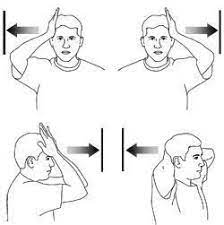
- To do this exercise Sit up straight and relax your shoulders.
- Put your hand on your forehead.
- Don’t move your head, just push it into your hand.
- You can do this exercise for flexion by putting your hand on your forehead and for extension back of your head and side flexion on any side of your head.
- Maintain for five to ten seconds. Repeat ten times.
Neck Extension with Head Lift Exercise
- Lie on your belly on a raised, stable, flat surface.
- Put your arms by your sides.
- Swing your head off the edge.
- Lift your head gradually to its neutral position and hold for four to five seconds.
- Repeat ten times.
Chin Tuck / Neck Retraction Exercise

- To start this exercise you have to Lie on your back on a matte.
- Put your arms by your side.
- Until you feel a tug, tuck your chin in and down towards your chest.
- Maintain for five seconds.
- Repeat 10 times.
Shoulder Retraction Exercise (Scapular Retractions)
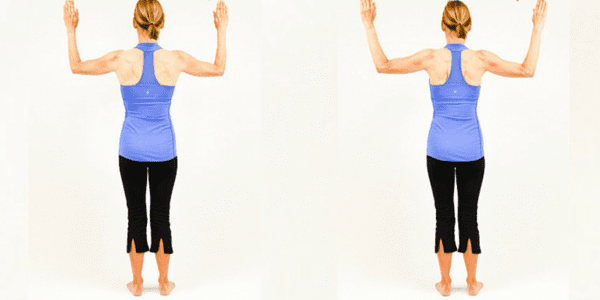
- To start this exercise you have to Sit or stand with your back against a wall.
- arms should hang loosely at your sides.
- Flex your elbows until your arms are at a ninety-degree angle at the elbow.
- Roll your shoulders down and back.
- Press the back of your upper arms against the wall by pressing your shoulder blades together.
- Hold for 20 seconds.
Neck rotation stretch
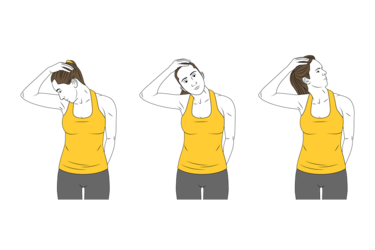
Slowly turn your head to one side without flexing it past your shoulder (you should not turn it so far that you can catch it after you). After keeping it for thirty seconds, rotate your head slowly to the other side and maintain it again.
- Lateral bend stretch: Lean your head to the left like you are trying to touch your shoulder with your ear. Hold it for 20 seconds.
- Scalene stretch: Scalene stretch: While seated in a chair, place your right hand on the seat and lift your right shoulder blade downward. Then, tilt your left ear slightly backward after bending it towards your left shoulder until you feel a tug.
The Lumbar Spine
Piriformis Muscle Stretch

Stretching this little muscle in the buttocks helps reduce low back pain. This stretch is also useful if you have sciatica.
- Take a supine lying position on the mat or floor.
- Flex your knees and firmly place both your heels planted on the ground.
- Choose one leg and relax your ankle on the other leg’s flex knee. This can look like an upside-down triangle.
- Get one arm through the triangle and utilize both hands to hold the flexed leg.
- Drag the leg toward your chest until you feel a tug in the glute of the crossed leg and maintain for thirty seconds.
- Repeat this on the opposite leg.
Seated Hamstring Stretch
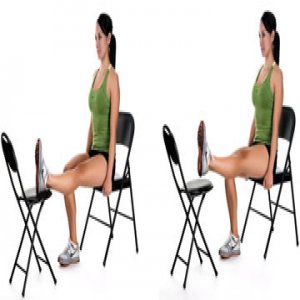
- For patients with radiating pain, this stretch can be helpful. This stretch will be instructed after the disc heals :
- Sit in a chair with the heel of one foot still on the floor and the other stretched out straight with the knee flexed at 90 degrees.
- When the back of your upper thigh starts to feel strained, straighten your back and lean forward over the stretched-out leg.
- Maintain this stretch for 30 seconds then change legs.
- Repeat three times.
Pelvic Tilt or Abdominal Bracing
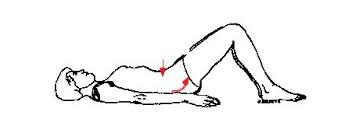
- This practice helps to enhance the deep core stabilizers, which will take pressure off the disc space and allow the return of the spine to a neutral position. When completing this exercise, the emphasis is on contracting the transverses abdominus (TA). This muscle is the ‘weight belt’ of the body and works to stabilize the spine to control flexion and extension forces on the spine.
- lie on your back with your knees flexed and feet flat on the bed.
- squeeze and pull in the deep and lower abdominal muscles without holding their breath.
- As this movement occurs, the lower back will flatten down to the ground, putting the spine in a neutral position.
- Hold for 10 seconds and repeated 10 to 15 times more.
Thomas Stretch
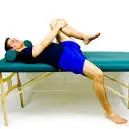
- Sometimes, due to extended sitting, the iliopsoas (hip flexor) muscle has compressed in an adapted manner. Being anteriorly attached to the lumbar spine, it can press against and pull the spine forward when it is shortened. We may see an expanded lordosis in the lumbar spine when this occurs. The Thomas stretch is a soft and safe way to stretch the hip flexor without stressing the spine.
- Lie on a flat surface.
- Drag one leg up to the chest.
- Tighten the abdominals in and hold the additional leg off the surface
- A stretch should be sensed in the anterior of the thigh.
Spinal Decompression
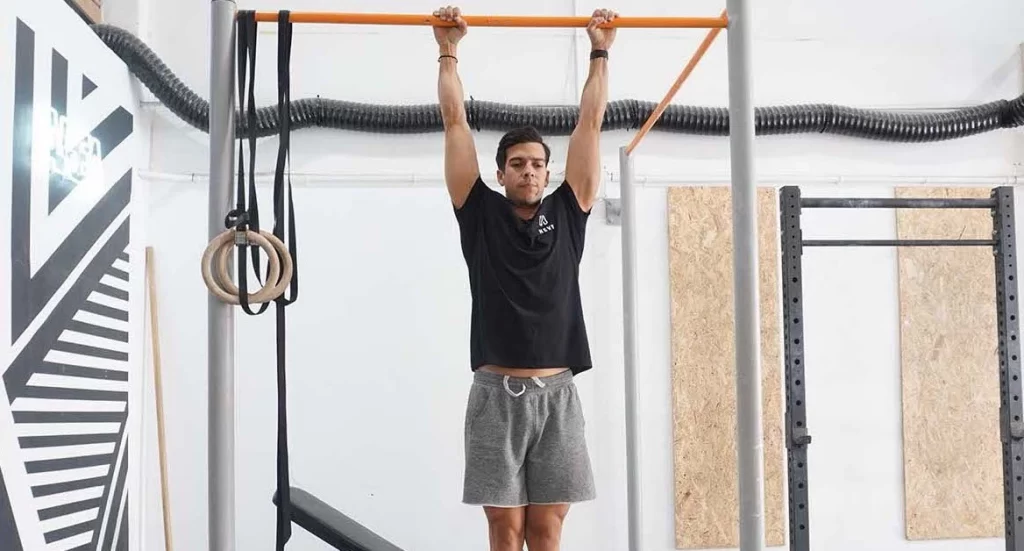
- Spinal decompression should be the very foremost thing you do to treat a herniated or bulging disc because it is important to create space between your vertebrae, and thus takes the stress off the discs.
- Utilize a bar or the top of a doorway (or anything you can hang from) and let your body “just hang”.
- Hang for thirty seconds and do three sets.
- Release very gradually from this so as not to generate any spasms.
- This should not induce any pain. This one is not beneficial for you if you experience pain while using it. At that point, stop and try some of the different exercises below instead.
Standing Extension
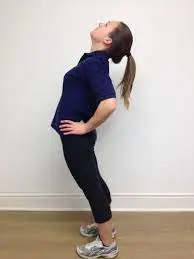
- This exercise helps change what you do daily (hunching Since most bulging discs and herniated discs are induced by poor posture This stretch aids in pushing the disc back into place by repeatedly flexing the spine (particularly forward with poor posture).
- Start this movement by standing up with the right posture. Now take both hands and put them on both sides of your lower back. Now with the help of your hands move your pelvis forward and grow your spine back. Your neck should follow the extension so that you end up facing the top.
- Begin with ten repetitions and complete 2-3 sets.
Half Cobra Pose (Prone Lumbar Extension)
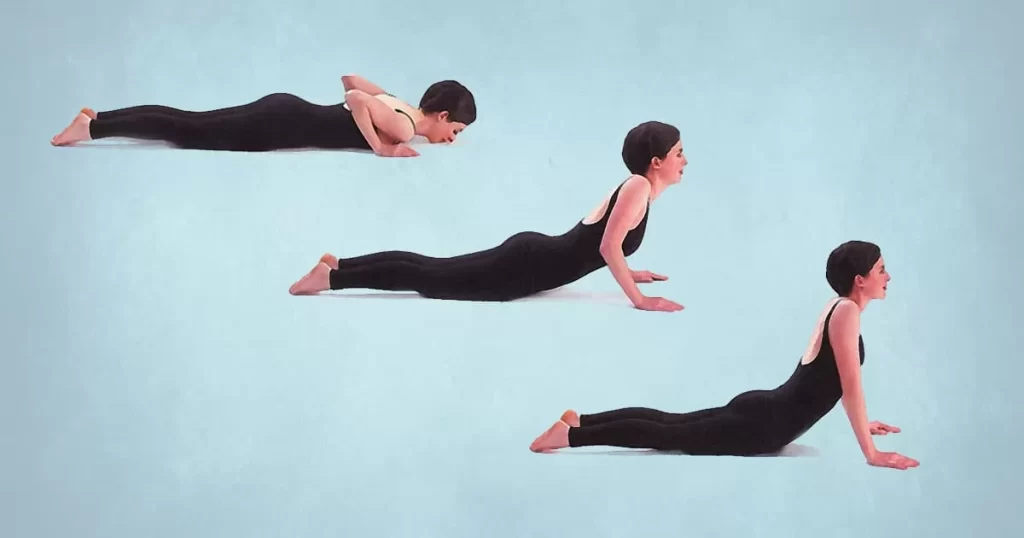
- To facilitate better healing, this stretch aids in pushing the disc material back toward the intervertebral disc’s center. The purpose of repeated lower back extension is the “centralization of signs”, which means discomfort that travels down the affected leg to the foot should come about up closer to the low back – which will, in turn, ease the pain.
- In the prone position, which is the starting posture for this exercise, slowly raise yourself onto your elbows while maintaining touch with the ground with your hips.
- Before returning to the flat posture (laying face down), hold the propped-up position for five seconds.
- Slowly rise to hold the end position for 30 seconds. purpose to complete 10 repetitions of this stretch.
Full Cobra Pose (Advanced Extension)
- With the use of this modern extension, pain symptoms can be alleviated by pushing disc material back toward the intervertebral disc’s center.
- Once you have got the half-cobra pose, you can improve the difficulty by moving to the advanced version of this stretch. Start this exercise by lying on your belly in the prone position (lying facing down) and gradually press up on your hands by keeping your pelvis in connection with the ground and lower back comfortable.
- Hold the prop-up position for 10 seconds. Ten repetitions of this stretch are your goal.
Cat-Cow
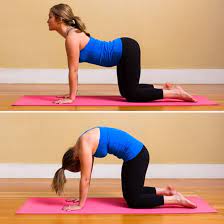
- This is one of the most common herniated disc exercises. By combining two yoga poses, the cat-cow stretch can help to reduce stress on the herniated disc by spreading the intervertebral disc space. It also enhances the mobility of the spine, which may assist to reduce disc herniation discomfort and speed recovery.
- Start this stretch on your hands and knees. Breathe in and let your belly “drop” towards the ground as you look up towards the roof.
- Follow this by breathing out and slowly rounding your spine while pressing into the ground with your hands and slightly curving your neck to look at your feet.
- Do 2-3 sets of 10 repetitions of this stretch.
Bird Dog

- This is an excellent exercise to enhance core strength and lumbar back muscles.
- Begin by getting down on your hands and knees, placing your hands under your shoulders and your knees under your hips.
- Brace (contract) your core as difficult as you can before starting any movement.
- Lift your right arm and reach it forward until it is in line with your trunk while engaging your core. At the same time, kick your left leg back until it is in line with your trunk.
- It’s important to avoid arching your low back when performing this.
- Hold this position for two to three seconds before slowly shifting back to your starting position.
- Repeat this with opposite arm and leg.
- Complete Alternate sides for ten repetitions.
Plank
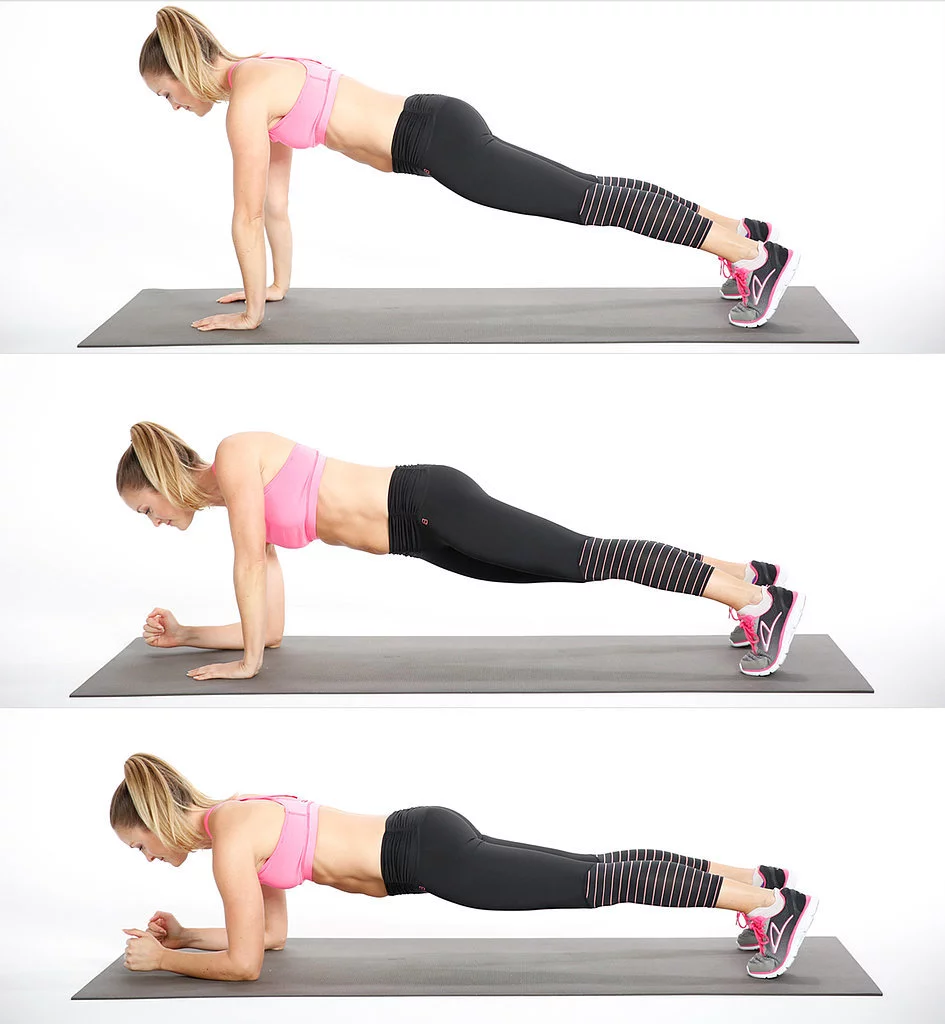
- This is the best exercise for enhancing gluteal and deep-core muscular strength.
- Start lying on your belly with your forearms against the mat.
- contract your core and raise your body so that you are resting on your forearms and toes.
- Verify that your spine is in a neutral spinal position, without elevating your butt or sagging in the low back.
- Hold the plank position for 20–30 seconds before lowering yourself to the ground.
- complete 2 to 5 repetitions of this exercise.
- Make sure to maintain a straight back during the entire exercise.
Sciatic Nerve Floss
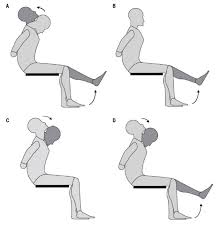
- To complete this exercise you have to sit in a chair with your arms by your sides and your knees flexed and your feet flat on the ground.
- Flex your neck by putting your chin on your chest and lean forward at your trunk.
- While expanding your chest and neck slowly extended one leg as much as you can, while bending your ankle.
- Return to the initial position.
- You should complete two sets of ten on the involved side.
Gentle Knee-to-Chest Stretch
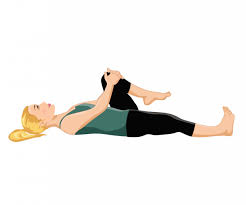
- This is a great stretch to start with and also use on days when your body won’t tolerate more strenuous stretches. To help with pain relief, the knee-to-chest stretch works the muscles on either side of the back:
- Take a supine lying position with one knee flexed and another leg extended.
- One knee should be pulled softly towards your chest with your hands placed behind it.
- For at least 10 seconds, hold the stretch before switching, then repeat it numerous times.
Back Flexion Stretch
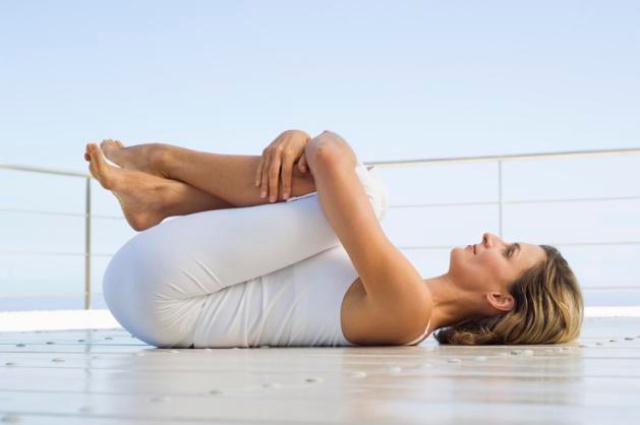
- One of the most frequent medical problems, low back discomfort, can be relieved with this stretch by lengthening both your back muscles and spine.
- Lie on your back
- Wrap your arms around your knees as you bring them close to your chest.
- As soon as you feel a tug across your mid and low back, straighten your neck and lift your head off the floor.
- Repeat five to ten times after holding for ten seconds.
Which exercise should be avoided with a herniated disc?
A person suffering from a herniated disk then you have to avoid heavy lifting, sudden pressure on the back, or repetitive strenuous activities. Patients should avoid all exercises that induce pain or feel as though they are making the pain more harmful. Avoid hamstring movements when feeling sciatica pain.
Exercise and sports that require a lot of effort can cause or make a herniated disc worse. Any heavy lifting or sudden pressure on your trunk can cause a herniated disc, as well as severe repetitive activities. If you are presently recovering from a herniated disc, you should evade all strenuous movements until cleared by your doctor.
- High impact activities
- Flexion-based activities
- Leg kicks
- Sit-ups
- Turning movements
- High-level core strength exercises
- Overhead weightlifting
- Repetitious forward bending at the trunk
FAQ
Which is the fastest way to cure a herniated disc?
Lifestyle and home remedies
Using heat or cold. in the beginning, ice packs can be utilized to reduce pain and inflammation.
Avoiding too much bed rest. Remaining in bed can lead to stiff joints and weak muscles, which can complicate your healing.
Returning to activity slowly. Let your pain guide you in continuing your activities.
Which activities should be avoided with a herniated disc?
High-impact aerobics.
Flexion-based movements.
Leg kicks.
Sit-ups.
Twisting actions.
High-level core strength workouts.
Overhead weightlifting.
Repetitious forward bending at the waist.
Can a herniated disc get more useful with movement?
One of the best remedies for the symptoms of a herniated disc is stretching movements. Back muscles can be gently stretched to increase flexibility and help stabilize the disc herniation site. Herniated disc exercises also improve symptoms and overall endurance and circulation.
How can I sit with a herniated disc?
It is proper to sit up erect without slumping. When you slump, you put additional pressure on the discs in the spine which can irritate your herniated disc. Additionally, you want to provide your knees are level with your hips. Your hips should be just above your knees if you sit at a desk.
Which things aggravate a herniated disc?
If it is in the lower back area, long sitting or habits like slouching or leaning to one side or the other could make a herniated disc worse. The solution is to make an effort to enhance your posture.When sitting, make an attempt to move around as much as you can.
Which are the three signs and symptoms of a herniated disk?
Pain feels on one side of the body.
Sharp pain in one part of the lower limb or upper limb, buttocks, and numbness in other parts. You may also sense pain or numbness on the back of the calf or sole.
Pain when pushing your neck or deep pain near or over the shoulder blade.
What distinguishes a disc herniation from a disc bulge?
“A bulging disc is like allowing air out of a car tire. The disc sags and peeks like it is bulging outward. The disc’s outer sheath has a rip or hole in a herniated disc. The nucleus pulposus, the disc’s jelly-like center, is pushed into the spinal canal as a result.
What kind of disc herniation is most typical?
Around 90% of symptomatic herniations occur at the most common levels for disc herniation, L4-5, and L5-S1.
What is the recovery period for a herniated disc?
Self-care: In the majority of patients, the discomfort caused by a herniated disc subsides over the course of a few days and disappear altogether in between four and six weeks. Limiting your activity, ice/heat therapy, and taking over-the-counter medications will help your healing.

